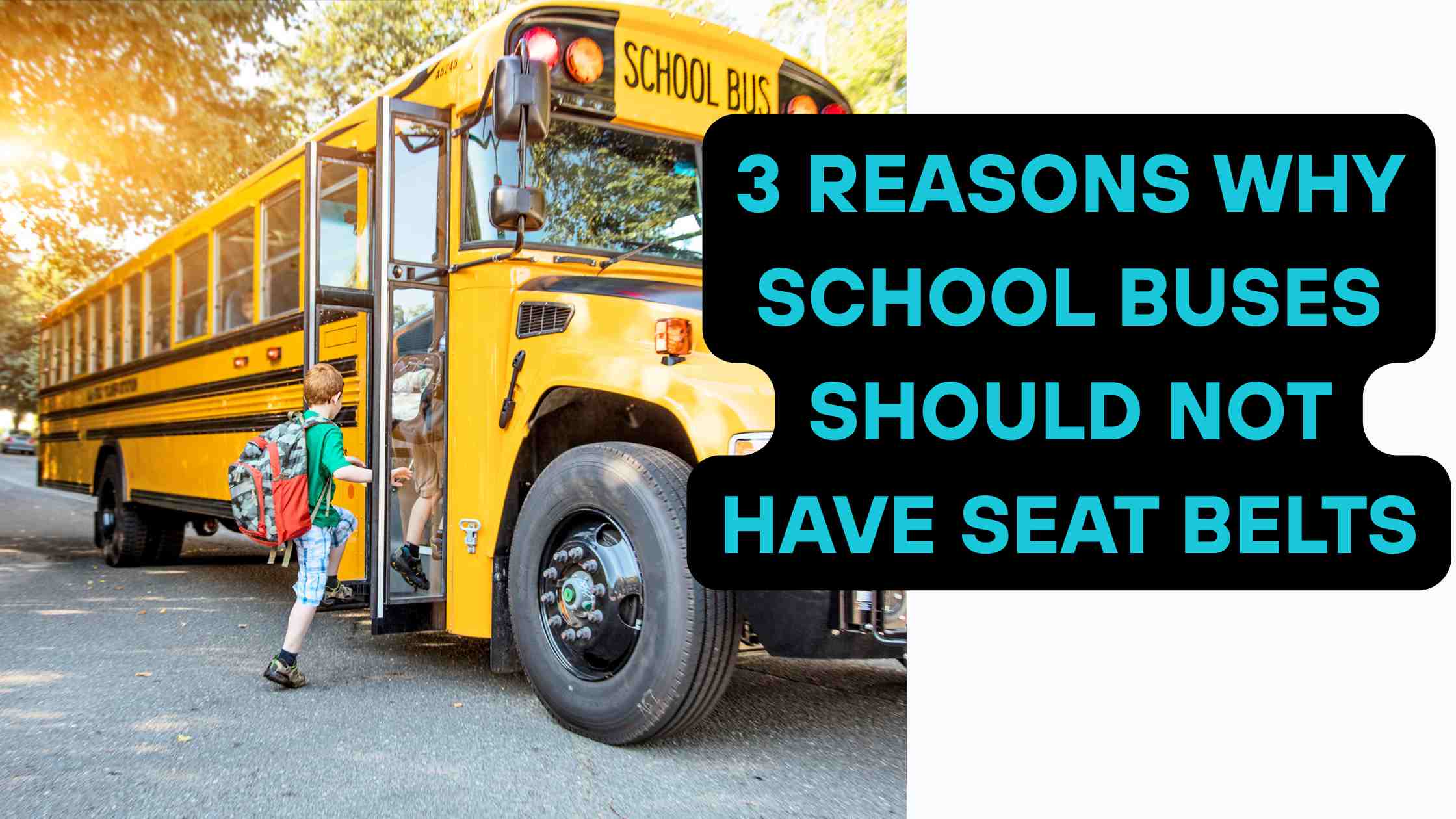
3 Reasons Why School Buses Should Not Have Seat Belts
Should school buses have seat belts?
It sounds like a simple yes-or-no question. After all, we’ve been trained to buckle up the moment we step into any vehicle. But when it comes to school buses, things get a little more complicated.
- Read our top blog on 20 reasons school is a waste of time
In fact, many experts, parents, and transportation authorities argue against requiring seat belts in school buses. And after doing some real thinking and research, I’ve come to understand that there are real reasons behind that decision.
Table of Contents
Let’s break down the 3 reasons why school buses should not have seat belts—and why the issue is more nuanced than most assume.
1. School Buses Are Already Incredibly Safe Without Them
It might surprise you, but school buses are one of the safest vehicles on the road.
The design of school buses follows a concept called “compartmentalization”—which means that the padded high-back seats are spaced closely together to absorb impact, kind of like an egg carton.
- In a crash, kids are protected by the strong seats around them.
- The buses themselves are heavy, high off the ground, and less likely to roll or crush.
- According to the National Highway Traffic Safety Administration (NHTSA), school buses are about 70 times safer than cars for getting kids to school.
So, if the bus is already built for safety, do we really need seat belts?
Many say no. Because adding seat belts might not actually improve safety significantly—especially in the kinds of accidents school buses are involved in.
2. Evacuation During Emergencies Could Become Slower and Riskier
Now imagine this: a school bus is in an emergency. There’s smoke, maybe fire. The kids need to get out fast.
Seat belts could delay that escape. Think about:
- Younger kids struggling to unbuckle
- Panic making it harder to release the belts
- Bus drivers needing to go row by row to help
Time is everything during an emergency.
Without seat belts, kids can be guided quickly toward exits. With seat belts, you might be adding extra seconds or minutes that can cost lives. In rare but serious accidents, easy evacuation can matter more than restraint.
3. The Cost and Enforcement Challenges Are Bigger Than You Think
Installing seat belts on all school buses sounds easy, right? But the reality? It’s very expensive and hard to enforce.
- Retrofitting existing buses could cost thousands per bus
- New buses with seat belts are more expensive to build
- Who makes sure every child wears them properly?
Bus drivers already juggle a lot: managing behavior, watching the road, keeping on schedule. Making them seat belt enforcers is unrealistic and adds stress that could distract from driving safely.
Plus, let’s be honest—kids don’t always follow the rules. Belts could be misused, ignored, or become sources of conflict or injury (yes, kids have hit others with them).
Summary: “What Are 3 Reasons Why School Buses Should Not Have Seat Belts?”
To sum it up clearly:
- They’re already extremely safe thanks to bus design and size.
- Seat belts could slow emergency evacuation, putting lives at risk.
- The cost and difficulty of enforcing proper seat belt use make it impractical.
Final Thoughts
At first, I used to ask myself, “Why don’t school buses have seat belts? Isn’t that dangerous?”
But once you dive into the facts, it’s clear: the question isn’t about ignoring safety—it’s about knowing what kind of safety works best.
School buses are built differently.
They’re designed for group transport.
They rely on structure, not straps.
Of course, some people still advocate for seat belts on school buses—and in certain states, they’re required. But across the board, there are strong, evidence-based reasons for why school buses should not have seat belts, and they shouldn’t be dismissed lightly.
Cite this article
You can copy and paste your preferred citation format below.
Martin, L. & Arquette, E.. (2025, May 11). 3 Reasons Why School Buses Should Not Have Seat Belts. Coursepivot.com. https://coursepivot.com/blog/3-reasons-why-school-buses-should-not-have-seat-belts/



